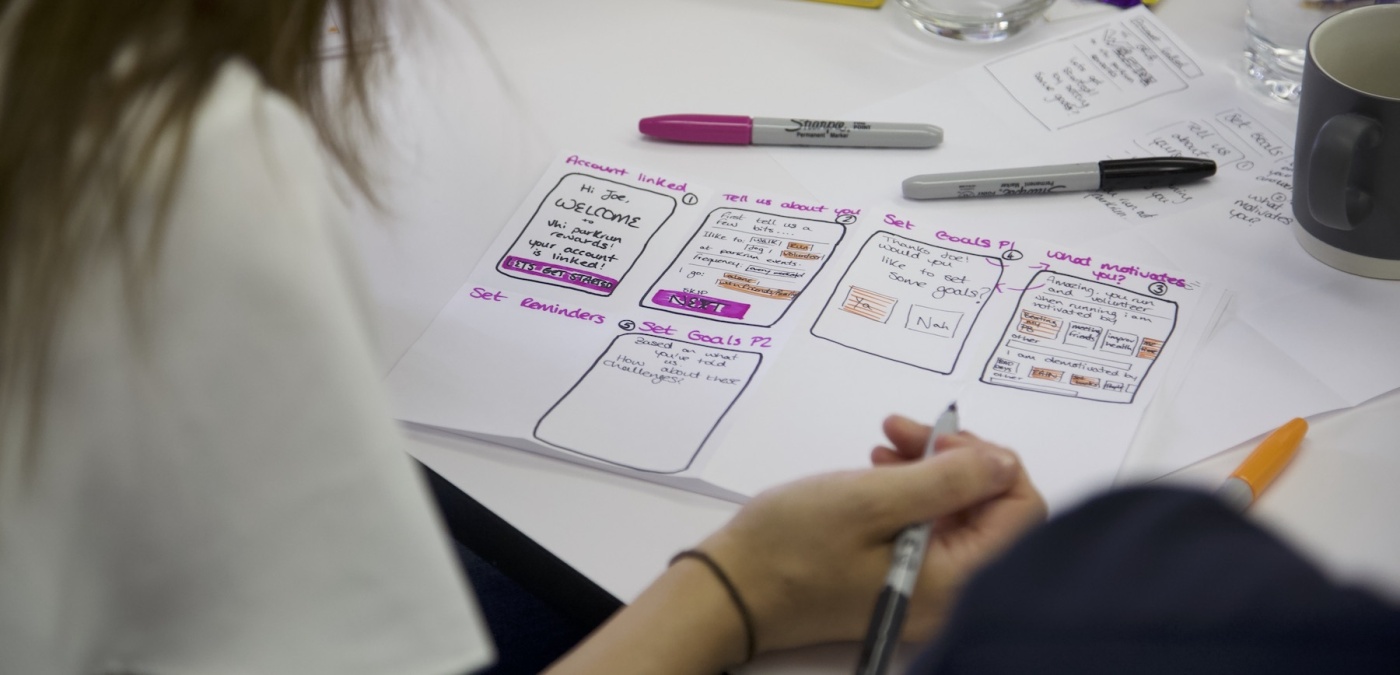
Onboarding your users or trust your design to do the work?

31 July 18
- Customer Experience
Onboarding has always divided the product community. Some swear by it as a powerful tool to engage new users, while some will see it as a last minute hack to please stakeholders or will argue that nobody ever "reads the manual."
So is onboarding a necessary evil? Just a bad afterthought hack to please stakeholders? Or when done properly, have a positive impact on the user’s experience?
Let's take a look at both sides of the story.
Shouldn’t great design speak for itself?
Great design doesn’t need onboarding
It’s a popular saying, if you need onboarding to explain your design then you’ve probably done it badly. Although this sounds over simplistic there is truth in that statement. Design is here to make complex information or tasks accessible and simple, if you have to label everything then your product is probably not that intuitive. Before you decide to slam a pop-up to explain a feature, look back at your interaction and copy and ask yourself: "Why would people not understand this action?" and try to act on it.
User testing will help you spot potential misunderstanding and pain points
Iterative design coupled with user testing and analytics should reduce the need for onboarding in all but the most complex applications. This data will help you fix most of your obvious misunderstandings as many users fail at a task or at understanding the purpose of your product. This can be tough, but it will also empower you to create a smoother, easier to follow experience.
UX focused copy can solve most of your onboarding needs
As much I love design, sometimes great copy can fix everything. To be clear - I’m not talking about adding a long explanation on every screen! It’s vital to be clear with what you ask users to do and label your call to actions accurately and concisely. If you want your user to start their journey by adding an event don’t label your call to action “view events” or “event sections”, be specific, write it as an action and call it “add event”.
Don’t let fear or laziness make you cut corners
This is a tough one, as you and your team are reaching the release date, doubt and pressure might weaken your confidence in your product design. Onboarding is often an afterthought. Firstly, it often emerges from a fear that users won't understand your product. You’re scared so you start shouting at your users. Secondly, lack of time (or laziness) can make onboarding feel necessary. Changing interactions and layout can have an impact on your development process but if you've built iteration and user testing in your development life cycle then those blurry moments in your user journey reveal themselves early on, and you can tackle them with minimal impact on shipping dates.
Ok, this sounds great but isn't it true that complex tools need time and support to master?
Onboarding is about helping your users when they most need it.
Onboarding has a bad reputation because when we think about onboarding we think of a “Carousel of cards with a skip button" (that everyone just hits!). Well-timed nudges can enhance your user experience by helping the user when they most need it. For example, relevant and contextual micro onboarding moments can help your users get to their “Aha” moment quicker and discover why your product will help them make their life better.
Don't offer all secondary features at once
It’s a mistake to assume that all of your users are at the same level of maturity when using your product. Offering features based on users' knowledge of your product will ease any overwhelming feelings of confusion during early explorations of your product. Remember when you completed your profile on LinkedIn and every time you returned to the site they asked you to fill in a little more detail rather than making you do it all at once? LinkedIn managed to get you comfortable with the basics before moving on to the next part.
Some tools are more complex than others
Would you expect an aspirational pilot to just walk into the cockpit and and fly off across the Atlantic? Without any previous training? Probably not! Not all products are as basic as Instagram, some tools have a certain level of complexity. More specialised or professional tools will show their true value once mastered so a little help while discovering a new tool can be more than welcome.
So, to onboard or not to onboard your users?
As always, the answer is: "It depends!". No two products' UX is the same but there are some great principles we can borrow from both sides.
Onboarding is a collection of things you can do to help your users “get” your product
This really isn’t about showing a carousel of tips at your users when they open your product for the first time. Onboarding can come in many flavours; from relevant micro-copy and contextual call to actions to making your empty states work harder or rewarding users with a delightful interaction for completing key tasks. Just remember that each step of the way, there are opportunities to support your users without having to shout instructions at them.
Use data to understand your product's "Aha" moment
Before you do anything, find out what success looks like for your users. Those moments are the only ones that matter when thinking about retention and you should focus your efforts towards those. Find patterns in your user's behaviour by identifying what makes long-term users stay. That unique correlation between user behaviour and long-term users will give you an indication of what to focus on.
Go outside and talk to your users
Whatever direction you will take, remember that you shouldn’t think or not think about onboarding because the industry said so. Look at your data and conduct user testing to spot trends in your user’s behaviour. Invest time to understand your user frustrations and be contextual and relevant with your nudges.
How can Graphite can help you increase user retention and understand what makes your users tick?
We’ve helped global healthcare and pharmaceutical companies create digital products fast. Our Design Sprints have become the ideal first step for teams to turn their big ideas into tangible products; this is where we bring key stakeholders from across the business, teams and even patients together, to rapidly validate ideas while keeping patients at the centre of our thinking.
Get in touch today to learn how we can help you create a customer-centric digital experience that adds undeniable value your organisation.
